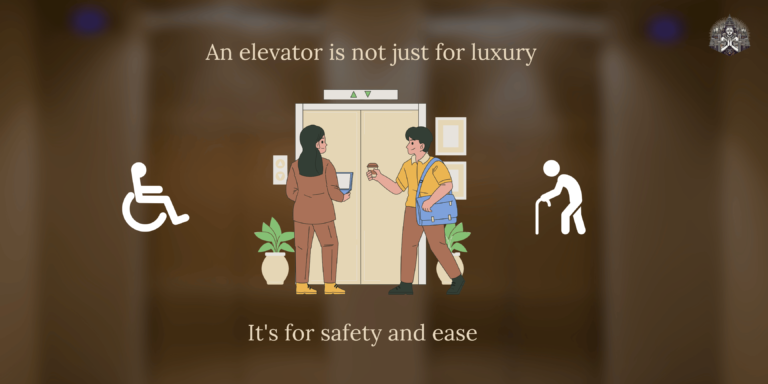Table of Contents
Introduction
When it comes to construction, even minor errors can lead to significant issues. Whether you’re involved in building a house, a commercial space, or any other structure, getting the design right from the start is crucial. In this blog, we’ll discuss the Top 10 Construction Design Mistakes and How to Avoid Them, offering practical tips to help you sidestep these common pitfalls.

Top 10 Common Construction Mistakes:
- Design Errors:
Miscommunication between architects, engineers, and contractors often leads to design errors. If everyone isn’t on the same page, what’s on paper might not match what’s built, resulting in costly adjustments later on. - Structural Flaws:
Structural flaws are serious and can arise from mistakes in calculations or a failure to follow engineering standards. These flaws can put the building’s safety at risk, which is why it’s crucial to get the structure right from the beginning. - Poor Planning:
Poor planning can derail a project before it even begins. Without proper site analysis, consideration of environmental factors, or realistic timelines, you’re likely to face delays, budget issues, and a final product that doesn’t meet expectations. - Code Violations:
Ignoring building codes isn’t just risky—it’s potentially illegal. Code violations occur when a building doesn’t meet safety, accessibility, or environmental standards, which can result in fines, legal action, or even demolition. - Improper Material Use:
Using the wrong materials or not applying them correctly can reduce a building’s lifespan and compromise its safety. Cutting corners to save money by using subpar materials usually leads to more significant expenses down the line. - Insufficient Ventilation
Ventilation is often overlooked, but it’s key to maintaining a healthy and comfortable environment inside a building. Without proper ventilation, you could face issues like mold, poor air quality, and higher energy costs. - Inadequate Site Preparation:
Proper site preparation is essential for a successful project. Neglecting factors like soil conditions, drainage, or site obstructions can lead to major problems that undermine the stability of the entire project. - Inaccurate Measurements:
Precision is crucial in construction. Even small measurement errors can cause misalignment, structural imbalances, and the need for expensive fixes later on. - Ignoring Climate Considerations:
Every construction project should account for the local climate. Failing to consider this can result in weather-related damage, inefficient energy use, and other climate-related issues. - Neglecting Safety Protocols:
Safety protocols exist for a reason. Ignoring them can lead to accidents, injuries, or worse, on the construction site. Making safety a priority is essential for a successful project.
5 Best Practices for Handling Construction Mistakes:
- Conduct Regular Audits:
Regular audits during construction can help catch mistakes early, preventing small issues from becoming significant problems. - Implement a Robust Review Process:
A thorough review of all design documents by multiple experts can catch potential errors and ensure the project stays on track. - Use High-Quality Materials:
Investing in quality materials from the start can save you from dealing with improper material use and its associated costs later. - Improve Communication:
Clear, consistent communication among all team members helps prevent misunderstandings and mistakes, ensuring everyone is working toward the same goals. - Emphasize Training:
Continuous training ensures your team is up-to-date on the latest construction techniques and safety protocols, reducing the likelihood of mistakes.
Best Practices to Prevent Future Mistakes:
- Detailed Project Planning:
A well-thought-out project plan, including realistic timelines, budgets, and scope, can prevent many issues caused by poor planning. - Regular Site Inspections:
Routine inspections help ensure the construction adheres to the design and complies with building codes, catching potential problems early. - Use of Technology:
Leveraging tools like Building Information Modeling (BIM) can improve accuracy and coordination, helping to prevent design errors and structural flaws.
To learn more about other Modern Construction Techniques like BIM,
Click this link below 👇:
Modern Construction Techniques
- Focus on Sustainability:
Incorporating sustainable practices can help avoid issues like insufficient ventilation and climate-related damage while also benefiting the environment.
- Continuous Learning and Adaptation:
Staying informed about the latest industry trends, technologies, and regulations helps you avoid future mistakes and improve your construction outcomes.
Summary
In the construction world, understanding the Top 10 Construction Design Mistakes and How to Avoid Them is key to a successful project. By recognizing common pitfalls—like design errors and poor planning—you can minimize risks and deliver safe, durable, and compliant structures. Implementing best practices such as regular audits, effective communication, and continuous learning will not only help you avoid mistakes but also ensure your projects are successful and stand the test of time.
Also Don’t Forget to Check Our latest Blog 👇:
Affordable Housing Stock Through Modular Building Construction
FAQs:
- What are the consequences of design flaws in construction?
Design flaws can lead to structural failures, safety hazards, increased costs, project delays, and potential legal issues. In severe cases, they can make the building unsafe for occupancy.
- Which can lead to accidents and fatalities?
Poor design or failure to meet safety standards can cause structural collapses, falls, or other accidents, potentially leading to injuries or fatalities on the construction site.
- What happens if the builder makes a mistake?
Builder mistakes can cause delays, increased costs, compromised safety, or legal disputes. Significant errors might require rework, impacting the project’s budget and timeline.
- What are the consequences of a poor design process?
A poor design process can lead to design errors, budget overruns, delays, and non-compliance with codes. The final result may not meet safety, functionality, or aesthetic standards, leading to client dissatisfaction.
- What are the consequences of faulty design?
Faulty design can result in safety risks, structural issues, legal liabilities, and costly repairs. It can also harm the reputation of the involved professionals, affecting future business opportunities.


